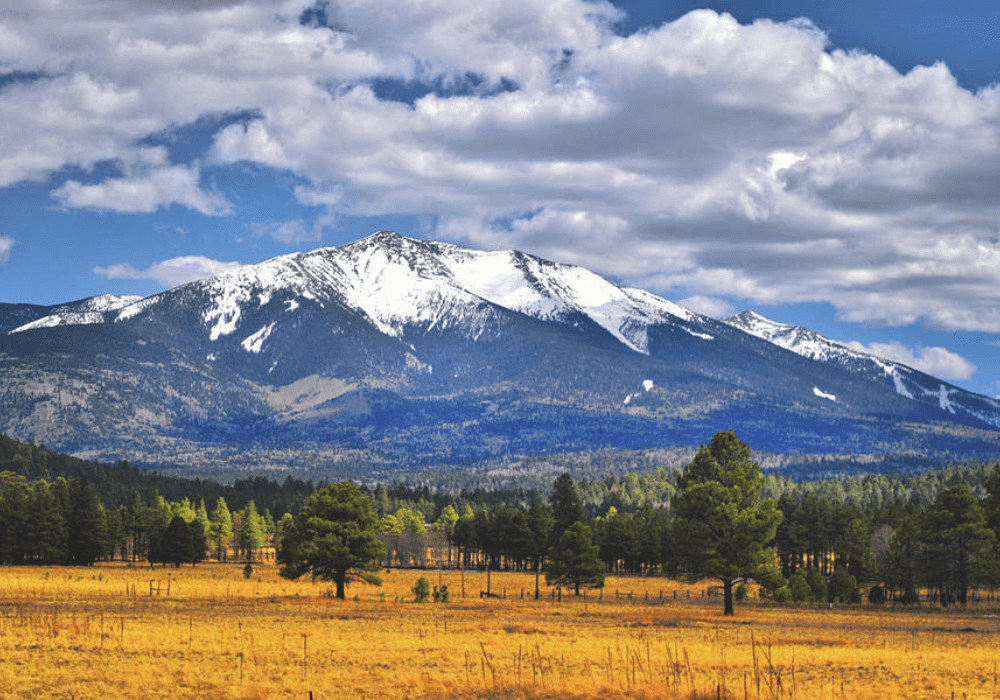
Hiking Essentials Checklist: What to Bring on a Hike
You rarely find something so simple yet so exhilaratingly enjoyable as hiking. What was once our ancestors’ only way of travel has now become a pastime for over 59 million people in the United States alone.
Hiking is as easy as getting out of your house and going for a walk on your local trail.
That said:
While hiking as an activity is simple, knowing what to bring with you while hiking can take some trial and error to finally determine.
Table of Contents
Hit Any Trail with These Hiking Essentials
If you’re a new hiker looking for a list of essential hiking gear or a seasoned hiker looking for some ideas on what gear you might be missing, then this article is for you. Below we provide our take on what hiking gear you should never leave home without. At the bottom, we included an easy-to-print checklist of all the items you see here.
1. Backpack
Before anything else, you’ll need some way to carry the rest of the items on this list. A lightweight, durable, and waterproof backpack should do.
Before you go for the first backpack you find online, make sure it comes in the right size for your torso. You’re going to be wearing your backpack for the whole duration of your hike so it needs to be comfortable. How comfortable your backpack is can spell the difference between a completed or failed hike.
Apart from that, consider the backpack’s capacity (the longer your hike, the bigger the capacity) and extra features.
2. Hiking Shoes
Another piece of hiking gear that can possibly end a hike is your hiking shoes. Your hiking shoes should be comfortable enough to get you out of your couch and onto the trail. Whether you wear barefoot shoes, sneakers, or running shoes doesn’t matter as long as you’re comfortable.
That said:
Some terrain will require more hiking-specific footwear. Slippery boulders, log crossings, or sharp rugged rocks will make you slip or shred your soles. If you plan on hiking unfamiliar trails, make sure you wear the appropriate shoes.
3. Socks
Socks and shoes work hand-in-hand to give your footsies comfort, support, and protection.
Your hiking socks should fit well and never slide off while you walk. They should be sweat-wicking to keep your feet dry. The level of cushioning also affects how warm they are so be sure to consider that.
Also, choose a sock length that can protect you against abrasion from your footwear. If you plan on hiking off-trail into snow or tall grass, consider getting gaiters as well.
4. Jacket
Hiking is going to pit you against the elements – that’s part of the fun. However, that doesn’t mean that you shouldn’t protect yourself accordingly. What you protect yourself against will depend on where you’re hiking.
For hot and humid places, get a jacket that’s breathable and lightweight. For colder and windier areas, find a jacket that’s warm and waterproof.
5. Hiking Hat
Similar to your choice of jackets, your hiking hat should be appropriate for the place you’ll be hiking in.
Whether your hat is built for the cold or the heat, it should fit your head correctly. Your hat should also have a chin strap to secure it on your head. Finally, it should be well-ventilated.
6. Trekking Pole
The necessity of trekking poles has been the subject of debate in many hiking circles. Since the final word at the end of the day is “to each their own”, we’ll leave this question up to you.
If you lean more towards trekking poles as a necessity, consider getting one that’s the right length so that your elbow is at a 90° degree bend as you hold the pole. Apart from that, it’s just a matter of deciding on other factors such as adjustability and locking mechanisms, foldability, weight, and shock absorption.
7. Map and Compass
If you’re planning to hike in unfamiliar places, you should learn how to use a map (of the area) and a compass. Not every place has good internet or data access so you shouldn’t rely solely on your phone. The last thing you want is to get lost in unfamiliar territory with the sun quickly going down.
Having a heavy-duty compass not only lets you find which way is north but also lets you estimate how many hours of daylight you have left.
8. Sunscreen
Whether you’re hiking in arid deserts or snowy tundra, you’re going to need sunscreen to protect your skin from harmful cancer-causing UV rays. Harmful UV rays are present even if it’s overcast so don’t think the clouds can help you.
Whether you get the ordinary or spray-on type of sunscreen, look for one that’s at least 30 SPF.
9. Sunglasses
Unfortunately, you can’t put sunscreen on your eyes so sunglasses are a must. While they may cost a bit more than a pair of gas station sunglasses, you may want to invest in polarized lenses. Not only do they give you better visibility, but they also protect your eyes from glare and UV rays.
Plus:
They keep you from having to squint all the time, thereby, reducing premature wrinkles around the eyes.
10. Headlamp
Some trails require you to hike in the dark to complete. Desert hikes, in particular, can require you to hike when it’s dark and rest during the day’s hottest hours.
On hikes like the above-mentioned, you wouldn’t want to be tripping all over the trail or encounter obstacles hidden by darkness. This is where a headlamp comes in handy. Unlike a lantern or flashlight, a headlight gives you light while keeping both of your hands-free.
11. Insect Repellent
Depending on the place you plan to hike, you may have to deal with pesky flying insects like mosquitoes. Not only are these bugs annoying, but they may also carry diseases like typhoid fever and malaria.
Avoid the hassle and carry some insect repellent at all times. This way, you can quickly reapply some on exposed skin once the last layer is washed away by rain or sweat.
12. Nutrition and Hydration
Hiking can be quite tiring, especially at higher altitudes and steep inclines. Make sure you top up on calories and hydrate yourself accordingly.
Hiking food can be anything from trail mix to energy bars while hydration will depend on how much body fluids you’re losing through sweat.
13. Sleeping Bag and Pad
As previously mentioned, hiking can be tiring. It never hurts to take a break to recuperate. Sometimes, a quick power nap is best in a sleeping bag or sleeping pad.
Both items are quick and easy to set up and store. Plus, you can get away with just a sleeping pad if you’re hiking somewhere warm.
14. Multi-tool and Knife
You never know what problems you’ll encounter on the trail. Since you can’t know what problems you’ll be dealing with in advance, it’s best to carry tools that can help in most situations. In our experience, a reliable multi-tool and trusty survival knife are usually all you’ll need tool-wise.
15. First Aid Kit
The only other item you can carry in case of emergencies is a first aid kit. What your kit contains will depend on where you’re hiking (such as a space blanket for cold areas). Make sure your first aid kit is fully stocked before your trip.
Hiking Essentials Quick Checklist
Never hike without these essentials:
- Backpack
- Hiking Shoes
- Socks
- Jacket
- Hiking Hat
- Trekking Pole
- Map and Compass
- Sunscreen
- Sunglasses
- Headlamp
- Insect Repellent
- Nutrition and Hydration
- Sleeping Bag and Pad
- Multi-tool and Knife
- First Aid Kit




